Skype: neodalle-travel
Tel: +86 135 7447 2266
E-mail: sales@zhangjiajieholiday.com

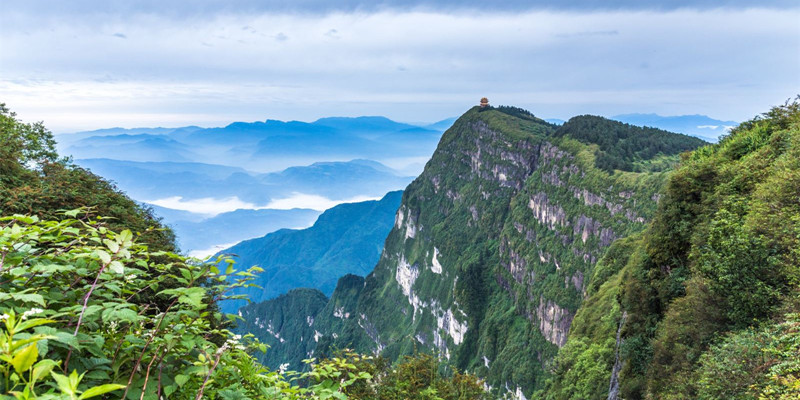
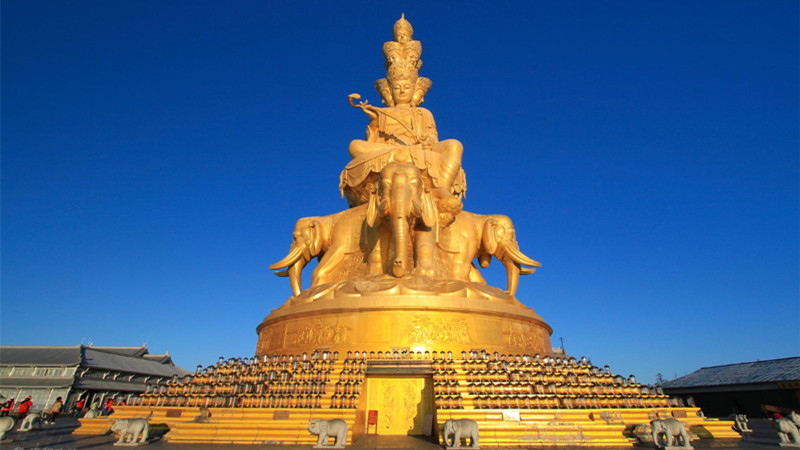
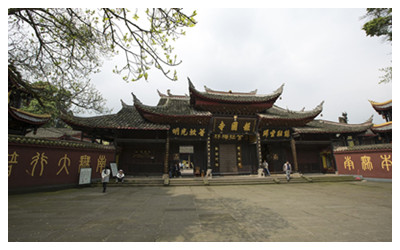 Baoguo Temple is the center of Buddhist activities in Mt. Emei. The climate here is mild and trees are verdant and serried. Visiting this temple, you can enjoy either the renowned ancient buildings and precious Buddhist cultural relics or peculiar natural attractions and rare animals and plants.
Baoguo Temple is the center of Buddhist activities in Mt. Emei. The climate here is mild and trees are verdant and serried. Visiting this temple, you can enjoy either the renowned ancient buildings and precious Buddhist cultural relics or peculiar natural attractions and rare animals and plants.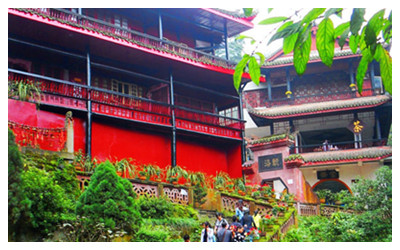 Qingyin Pavilion is in the middle part of Mt. Emei. It is no exaggeration to say that the whole area of the pavilion is a fine picture with green hills and blue water. At its high point there are towering exquisite and refined pavilions. Two gloriettes stand in the middle of the region of Qingyin Pavilion. There is one stone bridge crossing on the Black Dragon River (The color of the water is dark green.) and the White Dragon River (The color of the water is ivory.) on each side of the gloriette. The two bridges are like a pair of wings, so a beautiful name was given to them: Double Flying Bridges. In the lower point, you can see the Black Dragon River on the right of the Cattle Heart Pavilion and White Dragon River on its left.
Qingyin Pavilion is in the middle part of Mt. Emei. It is no exaggeration to say that the whole area of the pavilion is a fine picture with green hills and blue water. At its high point there are towering exquisite and refined pavilions. Two gloriettes stand in the middle of the region of Qingyin Pavilion. There is one stone bridge crossing on the Black Dragon River (The color of the water is dark green.) and the White Dragon River (The color of the water is ivory.) on each side of the gloriette. The two bridges are like a pair of wings, so a beautiful name was given to them: Double Flying Bridges. In the lower point, you can see the Black Dragon River on the right of the Cattle Heart Pavilion and White Dragon River on its left.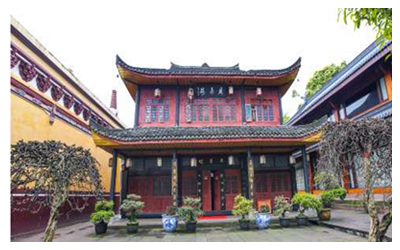 he scenery in Wannian Temple is pleasant all the year around but especially in autumn.In autumn there is heat of summer at the foot of the mountain even though snow has fallen on the top, but it is the best season to visit the Wannian Temple. Here red leaves are reflected in the water and when a breeze comes the leaves dance in the pond forming red waves glistening in the sunlight. So thrilling! Also in the Wannian Temple scenic region, there are villages creating a peaceful and intoxicating picture.Looking around beside the White Water Pond, the wind touches the mountains, wobbling the trees making a howling sound; red leaves have a dance to the wind in the air; the ripply stream water goes rightly through the temple and is crooning and echoing the wind.
he scenery in Wannian Temple is pleasant all the year around but especially in autumn.In autumn there is heat of summer at the foot of the mountain even though snow has fallen on the top, but it is the best season to visit the Wannian Temple. Here red leaves are reflected in the water and when a breeze comes the leaves dance in the pond forming red waves glistening in the sunlight. So thrilling! Also in the Wannian Temple scenic region, there are villages creating a peaceful and intoxicating picture.Looking around beside the White Water Pond, the wind touches the mountains, wobbling the trees making a howling sound; red leaves have a dance to the wind in the air; the ripply stream water goes rightly through the temple and is crooning and echoing the wind.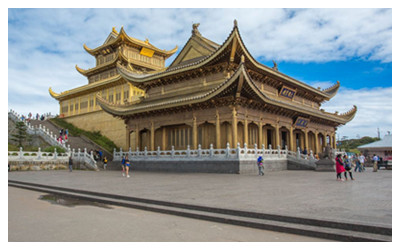 he Golden Summit is the symbol of Mount Emei. And Its main peak, the Golden Summit, is 3079.3 meters (10,103 feet) above the sea level, seemingly reaching the sky. Standing on the top of it, you can enjoy the snowy mountains in the west and the vast plain in the east.
he Golden Summit is the symbol of Mount Emei. And Its main peak, the Golden Summit, is 3079.3 meters (10,103 feet) above the sea level, seemingly reaching the sky. Standing on the top of it, you can enjoy the snowy mountains in the west and the vast plain in the east.Travel Tips
Add: Emeishan, Leshan City, Sichuan Province
Opening hours : January 16 - December 14 (peak season) 06:00-17:00;
December 15 -January 15 (off season) 07:00-16:00.
| Items: | High Season (Jan.16 – Dec.14) | Low Season (Dec.15 – Jan.15) | ||
| Entrance Fee: | CNY 160 | CNY 110 | ||
| Baoguo Temple: | CNY 8 | |||
| Fuhu Temple: | CNY 10 | |||
| Wannian Temple: | CNY 10 | |||
| Opening Hours: | 6:00 - 18:30 | 7:00 - 17:50 | ||
| Best Time to Visit: | Spring and Autumn | |||
| Sightseeing Bus: | ||
| Stations: | Attractions to Visit: | |
| Baoguo Temple Passenger Transportation Center | Baoguo Temple, Mt. Emei Museum | |
| Wuxiangang Staion | Qingyin Pavilion, Yixiantian, Joking Monkey Zone | |
| Wannian Temple Station | Xixin Place, White Dragon Cave, Qingyin Pavilion | |
|
Zero km Station |
Dragon Cave Lake | |
| Leidongping Station | Jieyin Palace, Golden Summit | |
| Time | Running Time | |
| Nov. - Apr. 25 | 7:00-16:00, every half an hour; every hour after 12:00 | |
| Apr. 26 - Oct. 30 | 7:00-17:00, every half an hour | |
| Chinese Public Holidays | 5:00-17:00, every ten minutes; every half an hour after 12:00 | |
| Cable Car | ||
| Time | Price and Opening Hours | |
| High Season (Jan.15 – Dec.14) | Jinding Cable Car: CNY 65 (upper) / CNY 55 (lower) Opening Hours: 5:30 - 18:00 |
|
| Wannian Cable Car: CNY 65 (upper) / CNY 45 (lower) Opening Hours: 6:40 - 18:00 |
||
| Low Season (Dec.15 – Jan.14) | Jinding Cable Car: CNY 30 (upper) / CNY 20 (lower) Opening Hours: 7:30 - 18:00 |
|
| Wannian Cable Car: CNY 30 (upper) / CNY 20 (lower) |
||
 Ask Questions ?
Ask Questions ?